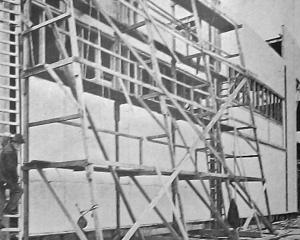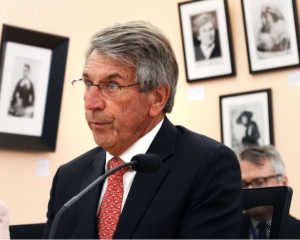For once, the much-overused adjective "iconic" is being used in a correct context. The Christchurch Cathedral, which last Friday was sentenced to demolition by the announcement of the Bishop of Christchurch that the Anglican diocese no longer had definite plans to rebuild it, has been over the 131 years of its existence an important and enduring symbol.
That the symbol carried strong connotations of origin, faith and culture only adds to its significance and the extent to which it had become indivisible from the identity of a city and its people.
Christchurch without its cathedral in the square is, for most people, unthinkable. There should be little surprise, then, that there has been a public backlash to the decision: a petition to save the building has been launched, calls have been made for the church to make public all information on the cathedral rebuild, and there is talk of legal and other recourses to stop the demolition.
Yet while that may be a perfectly understandable response, it is an inescapable part of Christchurch's tragedy that the city that once was will never be quite the same again. This, however, should not necessarily be emblematic of loss and despair.
As many commentators have opined, leading citizens of the shaken city among them, it is neither to diminish the tragedy that has befallen Christchurch and its citizens, nor to underestimate the daily challenges still facing them, to suggest that the aftermath of the earthquakes also offers opportunities for renewal.
For her part, Bishop Victoria Matthews surely must have made the announcement of the building's probable demise with a heavy heart.
She says the reality is that the Anglican Church would face a construction bill of $100 million over and above its anticipated insurance payout to rebuild a replica cathedral.
A decision on what form the city's new cathedral would take is still some time away, she said, and whether it was built on the site of the existing cathedral would depend on the results of tests into the stability of the ground underneath.
A new cathedral incorporating some of the old was still an option but "we would not be responsible stewards if we ignored the financial realities".
Hard as it may be to hear it, if that is the case, she is right: $100 million is an enormous sum of money for a church to stump up, especially in times when traditional churches have lost some of their allure.
Declining congregations and attendances notwithstanding, the moves to save the cathedral seem to be gathering pace, including talk of legal action.
Christchurch City councillor Aaron Keown has said he would chain himself to the ruins of the church to prevent it being demolished; more constructively he has suggested the way forward was for the community to come up with a plan to save the building and present it to the Anglican Church.
These sentiments were echoed by Mayor Bob Parker, who suggested striking elements of the cathedral could be saved or integrated into whatever took its place.
Already the city's architects are rallying to the cause: at least one is working on designs which could save and strengthen the landmark, but whether enthusiasm or volunteered expertise will bridge the gap between what might be desirable and what is financially possible, is another matter.
The plight of Christchurch's cathedrals - the Catholic basilica is similarly afflicted - draws attention to churches all over the country facing huge leaps in insurance premiums and, in some cases, the prospect of not being rebuilt should they be hit by earthquakes of similar magnitude to those in Christchurch. congregations, while still able to worship in their traditional venues, cannot be unaware of the uncertainties such rises create.
Last year, for example, Dunedin's 135-year-old Knox Church was hit by a 300% premium increase, and opted for a future without full insurance. One consequence of this could be a reassessment of priorities in worship: the faith itself, or the grand venue, the people or the buildings.
It would be ironic indeed if, in the demise of the iconic cathedral, people came to regain a closer understanding of the role community worship - as opposed to reverence for bricks and mortar - can play in fostering identity, harmony and spiritual meaning in a city.













